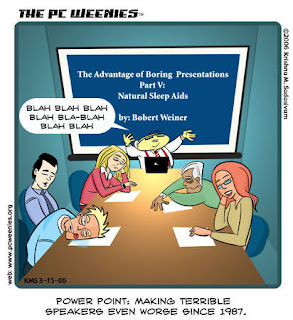
How to prepare?
1. Start with an outline, and include all the thoughts you have.
2. Group them into slides
3. Write for each slide what the key point you want to make, and design the animation and highlights according to the points you want to make
4. Write, in full sentences, the beginning and the end
5. Prepare the linking sentences/phrases between each slides
6. Rehearse, rehearse, and rehearse.
Advices from English Language Learning Centers at UofT.
Slide Design
- Organize the materials around one take-home message.
- Title slide clearly introduces topic and speakers
- Title of each slide reflects the main point of the slide
- Have one idea per slide, or per click.
- Agenda (outline) slide is presentation specific
- No Blue on Back or black on Blue fonts
- Sans serif fonts of size 20 or bigger
- Whenever possible, conceptual diagrams are used to clarify key points
- Figures present relevant data clearly and unambiguously
- Clear, horizontal labels on all figures
- Words are kept to a minimum in favour of images/figures/diagrams.
- Words on slides are presented as grammatically parallel bullets rather than sentences
- If animation is used, it's used to focus attention not to distract from a slide's main idea
- Decide where you want to audience to focus attention, and ensure that that's where the focus goes
- Use signposting slides: outline slide, section summary slide and conclusion slide.
Rehearsal
- Rehearse and time yourself. (Particularly Rehearse the beginning and the end!)
- Use a conversational style!
- Signposting during your presentation
- If your presentation runs overtime in rehearsal, don't speak faster, CUT Material.
- Remember that a presentation is not the same as a report. Like a good abstract, a good presentation should make the audience want to read your report.
- Be ruthless about slide inclusion: every slide must earn its keep. (Recall rule 1, organize your material around one take-home message.)
- Evaluate the relative length of each part of your presentation, and be sure the most time is spent on the most important section.
- You won't be able to present everything you've learned in the time given; you must carefully select specific material to highlight.
- Remember the audience has never seen your slides. They'll need time to absorb the ideas presented.
- Use hand gestures!
- When referring the materials on the screen, use 3Ts: touch, turn and talk.
- Look at the audience not the screen.
- Anticipate potential questions
- rehearse again and time yourself.
Image Credit: http://www.pcweenies.org

